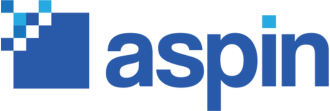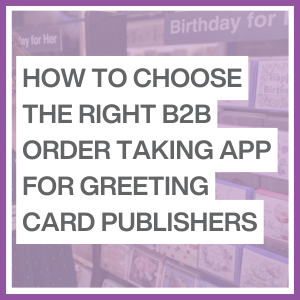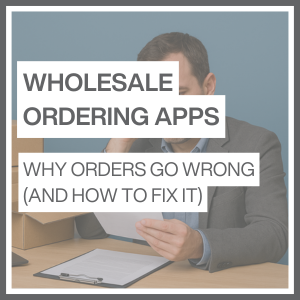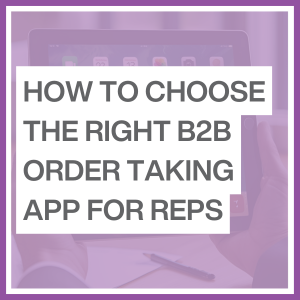The ultimate guide to choosing the best B2B order taking app
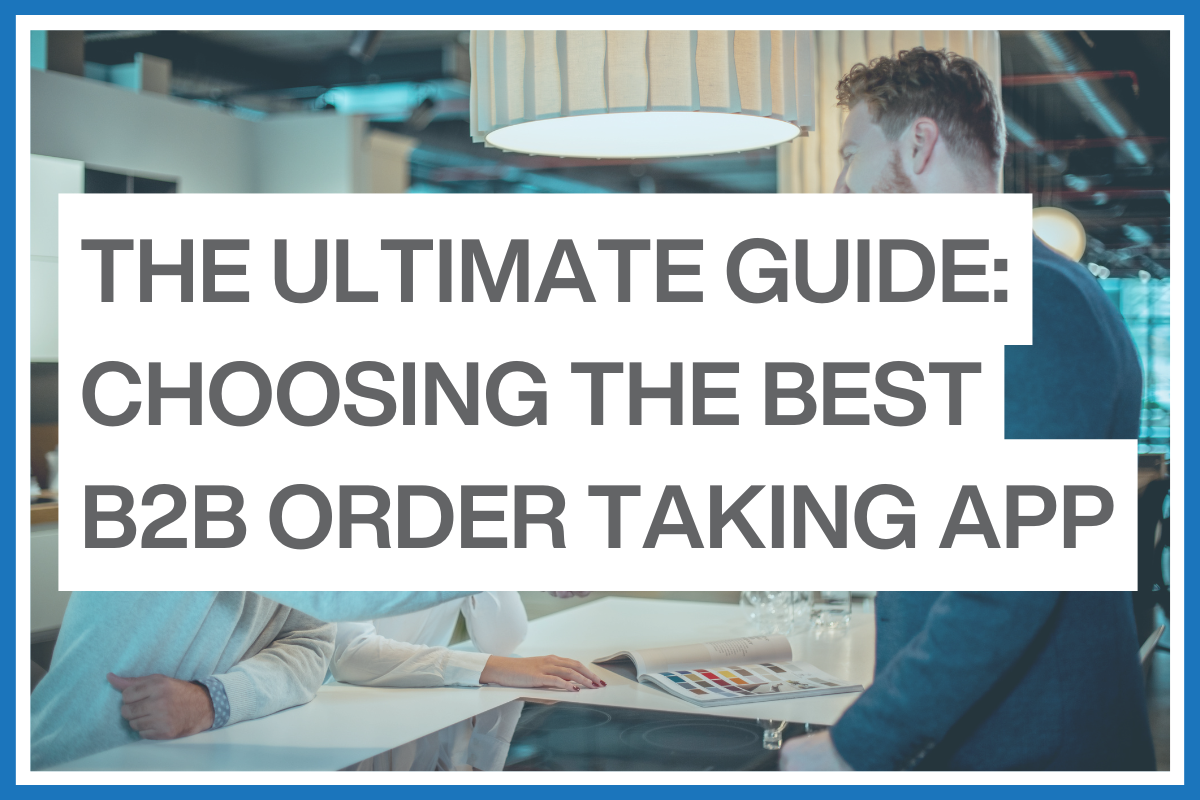
Efficient order taking is the backbone of a successful distributor business.
Implementing the right B2B order taking app not only streamlines processes. It will significantly reduce errors, boost productivity, and enhance profitability.
In this detailed guide, we’ll explore everything distributors need to know to choose the best B2B order taking app for long-term success. This isn’t just about digitisation. It’s about gaining a commercial advantage in a sector where margins are tight and service matters.
Table of contents
- What is a B2B Order Taking App?
- Why Distributors Need a Digital Order Solution
- Core Features to Look For
- Mobile Access: Empowering Sales Reps in the Field
- Real-Time CRM Integration: Smarter Selling
- Inventory Management Integration
- Automation and Sales Order Processing
- Boosting B2B Sales Efficiency
- Digital Transformation for Distributors
- Beyond Orders: How Apps Enable Strategic Selling
- How to Avoid Common Implementation Mistakes
- Calculating ROI from Your Order App
- Choosing the Right Solution for Your Business
- FAQs About B2B Order Taking Apps
- Next Steps

What is a B2B order taking app?
A B2B order taking app is a mobile-friendly software tool that enables distributor sales reps to place, manage, and submit customer orders digitally. Rather than relying on paper order forms, spreadsheets, or manual phone/email submissions, reps use an app. Typically on a tablet, this app will be used to present a digital catalogue, capture orders instantly and track rep / customer / product sales data.
These apps are designed for the complexities of wholesale: account-specific pricing, variable discounts, large catalogues, and integration with stock, CRM, and finance systems.
Crucially, a true B2B order taking app isn’t just a form, it’s a complete sales enablement system.
Why distributors need a digital order solution
Many distributors still rely on manual ordering workflows. These slow the business down in ways that aren’t always obvious and compound over time:
- Reps spend hours retyping handwritten notes
- Office staff double-check orders and correct errors
- Orders are delayed due to missing or incorrect product codes
- Seasonal pressure creates bottlenecks and backlogs
A well-implemented order app solves all of this. It creates a seamless link between the sales conversation and the warehouse. It ensures that product, pricing, stock and customer data is always current. It removes duplication, minimises delays, and lets every part of the business operate more effectively.
Core features to look for
When evaluating B2B order taking apps, focus on the features that match distributor workflows:
- Product visibility: Full digital catalogue with imagery, filters, descriptions, and variants
- Offline access: Orders must work without signal and sync later
- Pricing logic: Customer-specific pricing, quantity breaks, deals and promotional bundles
- Order templates: Quick ordering based on past or frequent purchases
- Order validation: Checks for missing info, out-of-stock SKUs, or minimum quantities
- Rep dashboards: See sales history, targets, visit plans and outstanding balances
The best apps are simple to use but powerful under the hood. They must be robust, intuitive, and tailored to the needs of field-based sales teams.

Mobile access: empowering sales reps in the field
B2B selling is increasingly mobile. Reps need to be self-sufficient; able to handle customer conversations, check stock, and place orders without phoning the office.
A strong mobile order app allows:
- Access to live stock and pricing from any location
- Upselling through product recommendations and alternatives
- Real-time submission of orders while with the customer
- Offline order entry that syncs automatically
This reduces admin, increases confidence, and gives customers a smoother experience. Reps no longer need to follow up later or correct errors post-meeting. Every interaction is more productive.

Real-Time CRM integration: smarter selling
Order apps shouldn’t operate in isolation. Integrating with your CRM connects sales activity with the rest of your business. Reps get instant access to:
- Customer credit status and terms
- Purchase history and buying behaviour
- Notes from previous visits or calls
- Marketing preferences and segmentation
Meanwhile, managers gain visibility into pipeline activity, rep performance, and territory coverage. CRM-linked order apps transform sales meetings from transactional to strategic. Even better if you can find an app with CRM functionality built-in.
Inventory management integration
Live inventory data is one of the biggest advantages of a B2B order taking app. Without it, reps risk promising stock that’s already allocated or unavailable.
Look for apps that:
- Pull stock data from your ERP or warehouse management system
- Allow for backorder flags or alternative product suggestions
- Update availability in real-time or on sync intervals
This level of transparency helps your team sell more effectively and prevents the friction caused by stockouts or over-promising.
Automation and sales order processing
Once an order is placed, speed matters. Manual entry into back-end systems creates delays, errors, and unnecessary admin.
With automation:
- Orders are pushed directly into your ERP or finance system
- Dispatch and invoicing can begin immediately
- Admin burden is reduced across departments
This shortens the order-to-cash cycle and ensures accurate, timely fulfilment. Critical in seasonal or high-volume periods.

Boosting B2B sales efficiency
Efficiency gains come from more than just order capture. A good app should support broader sales enablement:
- Helping reps prioritise visits based on order history
- Enabling product discovery and bundling
- Supporting cross-sell opportunities through linked SKUs
- Reducing time spent on manual follow-up or order entry
Over time, these efficiencies can lead to stronger customer relationships, improved territory coverage, and greater revenue per rep.

Digital transformation for distributors
Digital order taking is often the first step in a wider shift to smarter distribution. It’s a gateway to:
- Integrating real-time data across departments
- Building predictive insights through sales analytics
- Reducing cost-to-serve while increasing order value
Forward-thinking distributors are using apps not just to take orders. But also to change how they sell, serve, and scale.
Beyond orders: how apps enable strategic selling
A B2B order app should support strategic selling, including:
- Highlighting slow-moving stock
- Flagging margin-rich lines
- Presenting seasonal promotions
- Suggesting range extensions based on customer profile
These nudges drive incremental revenue and reinforce the rep’s role as a trusted advisor, not just a transactional order taker.
How to avoid common implementation mistakes
- Choosing generic retail apps: B2B distribution has specific needs. Generic ordering tools won’t handle pricing rules, account hierarchies or stock logic correctly.
- Failing to involve reps early: Your reps will be using the app daily. Involve them in testing and feedback to ensure adoption.
- Skipping integration: Manual syncing defeats the purpose. Ensure your order app integrates to your CRM, ERP and reporting systems.
- Underinvesting in support: Rollout is only the start. Choose a provider who offers UK-based support and continuous product improvement
Calculating ROI from your order app
Typical returns from a well-deployed B2B order taking app include:
- 25–40% reduction in order processing time
- 20–30% drop in order entry errors
- 10–15% improvement in average order value via upselling
- Fewer delivery errors and returns
- Better rep productivity and territory coverage
Track these metrics against your baseline to measure success. Then and use them to refine training and adoption.
Choosing the right solution for your business
Start with clarity:
- What problems are you solving? (Errors, delays, inefficiencies?)
- What systems need to integrate? (CRM, ERP, PIM?)
- What’s your rollout timeline and internal resource?
Then compare providers based on:
- Track record with distributors
- Mobile experience and usability
- Support and roadmap
- Flexibility for your pricing/inventory rules
Ask for a demo with your data. Run a pilot with real users. Choose a partner who understands your industry, not just your tech stack.
FAQs about B2B order taking apps
Can we customise product lists by customer?
Yes. Most apps allow account-specific catalogues, pricing, and exclusions.
Do apps work offline?
Best-in-class apps offer full offline functionality, syncing when signal is restored.
What devices are supported?
Typically iPad or Android tablet. Check provider specifications.
Can reps see order history and analytics?
Yes, if the app is integrated with your CRM or ERP.
What about security and data compliance?
Look for apps with GDPR-compliant storage, role-based access, and encrypted transmission.
Next Steps
Digital order taking isn’t just more efficient, it’s more competitive. Distributors who equip their reps with the right tools will win more business, reduce overheads, and build lasting customer loyalty.
- Map your current order workflows
- Identify friction points and business goals
- Shortlist providers with distribution experience
- Request a tailored demo and involve sales teams early
PixSell from Aspin helps distributors take orders faster, smarter, and with fewer errors.
If you’re ready to transform your field sales team with a B2B order taking app, book a demo or get in touch with our team.
Related Articles
